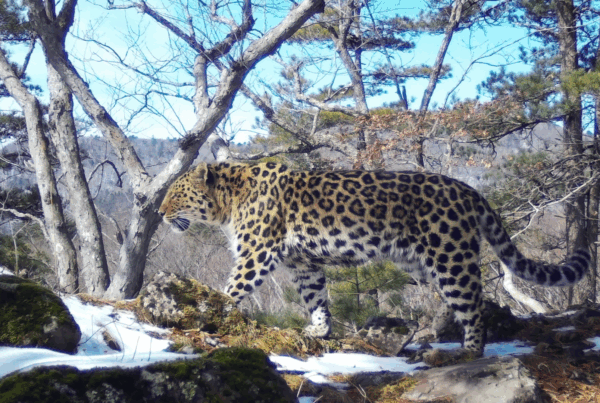- In Northeast China’s dense forests, a critical project is underway to protect the Amur tiger and leopard, which face significant threats from poaching in the Hunchun Nature Reserve and Northeast China Tiger and Leopard National Park.
- The Wildlife Conservation Society (WCS) collaborates with local authorities to engage communities in conservation. Community patrol teams have conducted 255 patrols, removing 173 snares, and documenting wildlife, including sightings of Amur tigers and leopards.
- WCS and local partners have educated around 200 community members on wildlife coexistence. Surveys indicate that community-based efforts have successfully enhanced knowledge and attitudes towards conservation.

WCS_China
In the dense forests of Northeast China, a critical project is underway to safeguard two of the world’s most magnificent big cats – the Amur tiger and the Amur leopard. These species, residing in the Hunchun Nature Reserve (HNR) and the Northeast China Tiger and Leopard National Park (NCTLNP), are at the heart of a groundbreaking initiative led by the Wildlife Conservation Society (WCS).
The Challenge: Poaching Threats
The project area, spanning about 5,000 square kilometres, is home to an estimated 54 Amur tigers and 34 leopards. However, these majestic creatures face a grave threat from poaching, with snares posing a significant danger to their survival.
Community Power: The Key to Conservation
Recognizing that local communities play a pivotal role in wildlife conservation, WCS has partnered with the NCTLNP administration and the Hunchun Municipal Forestry Bureau (HMFB) to foster community involvement. This collaboration has led to the formation of community patrol teams across seven villages, tasked with the critical job of monitoring and protecting the forests from illegal activities.

Patrols in Action
In 2023, these community patrol teams undertook 255 patrols, covering an impressive 1,373 kilometres. Their vigilant efforts resulted in the removal of 173 snares, significantly reducing the threat to local wildlife. These patrols also involved documenting wildlife signs, with sightings of roe deer, wild boar, and even the elusive Amur leopards and tigers.

Educating for the Future
Beyond patrolling, WCS and HMFB have been dedicated to educating the local communities. Through five public education campaigns, about 200 community members learned about the importance of coexistence with wildlife and strategies to mitigate human-wildlife conflicts. These efforts have been instrumental in enhancing community awareness and support for conservation.

Measurable Impact
The impact of these initiatives is evident. Surveys conducted before and after the project show a significant increase in conservation awareness among community members involved in patrols. Villages with patrol teams reported higher knowledge and better attitudes towards conservation, illustrating the success of community-based approaches.
Looking Ahead
The future of Amur tigers and leopards in Northeast China looks brighter thanks to the collective efforts of WCS, HMFB, and local communities. By working together, these partners are not only protecting wildlife but also fostering a sustainable relationship between humans and nature.
This inspiring project demonstrates that with community involvement and dedicated conservation efforts, it is possible to create a safer, thriving habitat for some of the world’s most endangered species.

Stay tuned for more updates on our conservation journey and join us in celebrating the remarkable recovery of tigers and leopards in Northeast China. Your support can make a significant difference in safeguarding the future of these magnificent creatures. Donate today!





